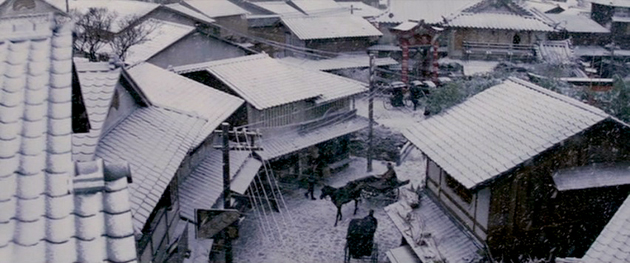John Myhre

Well, the next day I walked by the conference room and inside the conference room was Timur Bekmambetov with ten of his people from the visual effects company from Moscow and they were all using the video camera on our foam-core model and loving it! And Timur goes, John! John, come in! John, this is really good technology! We need to do this on every set! Can we do this on every set?
And I said, Yes, absolutely! And so I won them over to the idea because there’s something just so tactile about being able to hold the camera and move it just a little inch there. I know it sounds silly but you can even light these things. For some reason, I think because it’s physically there and you’re physically touching it, it gets everyone around it really involved and aware of it. And absolutely you can do the same thing on a video screen with a 3D model, and we do, but there’s something about it, I don’t know whether it’s just that it’s fun or that it’s this idea that you’re all there together and you feel part of it. You’re not having just one guy at the keyboard.
So again we won over Timur who is the most high-tech gentleman in the world and he demanded that we do our foam-core models for every one of the sets and he used them. Production meetings we’d be using them when we had everybody there together: special effects and visual effects, producers and studio people. We’re all there with the little cameras looking at the screens and having a great time.
AS: Are you involved with post visual effects at all or are you done when principal photography wraps?
JM: It’s all changing now. Production designers are becoming, as we should have been all along, more involved with post. On Snow and the Seven what’s been worked out is that I’ll be very involved with the post. And I think that’s important. We’re always the ones leading the design and we always work very closely with visual effects and we try to use the same systems that they’re using so that they can take our work and just add onto it directly. It’s becoming so interconnected now that my hope is that it soon becomes just one department.
AS: How involved are you with the locations department? Do you end up finding locations yourself at all?
JM: I’m very involved with the location scouting because it’s all part of my job as well. And some locations are critically important to what we do. I love being able to go out with the location scouts. Generally we’ll send location scouts to do a preliminary scout and have them see a lot in a short period of time and then I’ll respond to photos and go with them. We don’t just go look at what they’ve seen, if we get excited about something we’ll keep moving and finding more. So yeah, I love being able to go out and find locations. In Japan they called it Location Hunting and I loved that so now I call it Location Hunting.
AS: Do you ever do any sketching yourself?
JM: I’ll do super rough sketches and then I’ve got some great guys on this project that then make them beautiful. I’m lucky enough to be working with some wonderful illustrators.
Pingback: David Warren
Pingback: Jess Gonchor
Pingback: David Wasco & Sandy Reynolds-Wasco